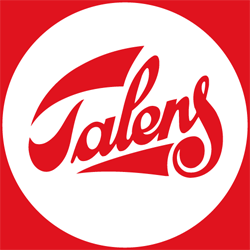Equilux horses - variety and movement by design.
 With a fully articulated and carefully jointed body, these model horses can be positioned in many ways and are capable of a wide variety of equine expressions.
With a fully articulated and carefully jointed body, these model horses can be positioned in many ways and are capable of a wide variety of equine expressions.
Made from natural materials to experience a closer connection to the sculpture, each horse is
made with American cherry and bass wood. These two wood types are a perfect combination as some parts benefit from less weight than others to achieve the effect and positions. Bass is a light, fine grained wood. Cherry is finer yet, harder, and has a higher density perfect for joints and thin parts of the leg. The rib cage for instance is made of cherry and hollow, with a thin wall. All parts meticulously balanced for natural movement, weight and feel when holding it in your hands. All horses can be mounted on a stand to enhance the variety of positions.The historic oil colors with natural pigments vary from brown, black, greys and whites of natural horse colors to an imaginative deep celestial blue. All have a wonderful depth of color and carry a sense of history and tradition that surrounds the world of the horse today. [Patent Pending].
"Sculptures reflecting natural movement and expression"
Artist statement by Maria Talasz
“Years ago I envisioned building a horse sculpture capable of expressing moods. To a largeextent, a horse uses body language to communicate. To make that possible in my versions of articulation, the horse's neck gets extra attention. It plays a large role in this language, together with ears, eyes, mouth, nose, and tail. The movement of a neck has to be smooth in moving up and down, nicely arching, and well flexing. In addition, the ears have to be able to move in all natural directions.

Blue Horse was created from a small piece of fine cherry wood carved into a little head. From there every other part was created by hand. The horse with
his relatively rough finish, its flexibility of the parts, and the natural sense of the movement, gets a personality of his own when moved about and positioned. It comes to life through the owner's hand.
The sculptures are intentionally created in traditional materials such as wood, selected for specific properties, fine cow leather, real goat hair, complemented with metal and finished in natural (historic pigments) oil based paints. Considerable time is given to all details and aspects of the design of each part to achieve the maximum possible realistic effect."
Software & Equipment
3D modeling software Rhino 5 by McNeel and Associates. CAD CAM in Fusion 360. Machining of certain parts is performed with Roland CNC machines. Other products include DeWalt, Proxxon, Dremel, Makita, and others for planing, cutting, sanding, and fine drilling and hand finishing, and Talens fine water colors.
 .
.  .
.  .
. 

Naming
The horses follow the naming of the Dutch Warmblood stud book. 2019 being an "O" year. The beginning of 2020 will see two horses with the letter "P".
KWPN (Dutch Warmblood) Naming System
The KWPN naming system using designated letters each year has been in place for
many years. By using letters for each year it is easier to identify when the horse was
born. The letters Q, X & Y are not used. Each foal born in a given year must have a
name not to exceed 20 characters or spaces and beginning with the designated letter for
that year. The KWPN does not have a unique naming requirement except in the case of
Approved stallions. Approved stallions must have a unique name and in some cases
must be renamed. 2021= R / 2020=P / 2019=O / 2018=N / 2017= M / 2016 =L / 2015 =K / 2014 =J / 2013 =I / 2012 =H / 2011=G / 2010=F / 2009=E / 2008=D / 2007=C
/ 2006=B / 2005=A